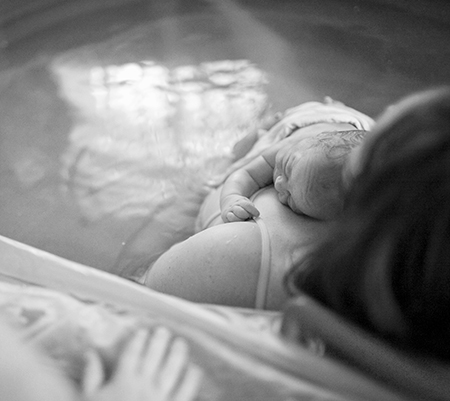Hospital closures and other changes to health care in rural communities mean that families no longer have access to the same maternity care as they once did. Community midwives could help to fill this gap by helping some women through a home birth, but there are concerns about the extra time it would take to get to a hospital in an emergency.
Elizabeth Nethery, a PhD student in the School of Population and Public Health, tackled this dilemma by comparing the outcomes for rural women who have babies at home to those in other, more populated, parts of the U.S. Her study was recently published in Birth and in this Q&A she discusses her findings.
What did you learn about the risk of home births for women in rural areas?
People tend to assume that there is an additional risk to having a baby at home in rural areas, because of potentially longer travel times to a hospital with maternity services, difficulty getting ambulances, and weather that can make it hard to travel.
We found that midwifery care and home birth is as safe for rural women and their babies as it is for women from the rest of the country. The risks for rural women who had low-risk pregnancies and planned to deliver at home or in a birth centre with a midwife were no different than for the moms or babies in the rest of the country.
Our findings suggest that rural midwives may be screening clients and referring those who could need more advanced medical care to the hospital based on their access to emergency care.
Why do we need to look at the safety of home births in rural areas?
Prenatal, postnatal, and birth care is increasingly difficult to access in rural communities in the U.S. Closures of obstetric units in rural hospitals, shortages of maternal health-care providers, and distances to travel have widened the gap to access care in low-density populations. The result is that 80 per cent of rural counties have no hospital providing maternity care and 50 per cent have no actively practicing obstetrician.
Midwives serving low-risk women are helping to fill an important gap in the rural health-care system. Increasing access to midwives and home birth could play an important role in expanding much-needed rural maternal health care.
What insight does your research provide for home birth in Canada?
The issue of access is not limited to the U.S.; it is also an issue for rural and remote communities in Canada. It becomes difficult to maintain services in small communities when there just isn’t the volume of people to maintain those services.
The role of the community midwife is not just limited to those who plan a home birth. For women who plan a hospital delivery, midwives can deliver prenatal and postpartum care so they don’t need to do as much travelling.
Why do women choose to have babies at home?
Other research finds that families that plan a home birth experience fewer interventions in birth, lower caesarean section rates, and increased breastfeeding rates. Women in rural counties may additionally be seeking quality maternity care in their own community without having to travel, worry about weather conditions, arrange childcare for other children or be away from their families for birth.
